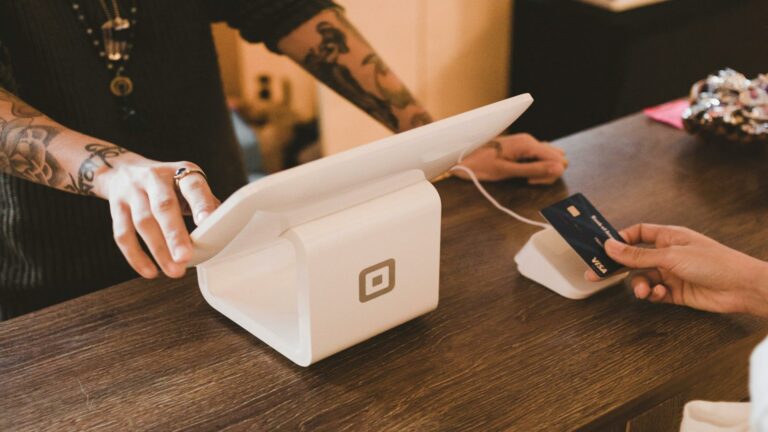Website Security Best Practices: Safeguarding Your Digital Presence
Comprehensive Website Security Best Practices
In today’s rapidly evolving digital landscape, implementing robust website security best practices is crucial for protecting your online presence, customer data, and business reputation. As cyber threats become increasingly sophisticated, it’s essential to stay ahead of potential vulnerabilities and ensure your website remains secure.
To fortify your website’s defenses, consider implementing these critical security measures:
- Use HTTPS protocol: Implement SSL/TLS certificates to encrypt data transmission between your website and users. This not only protects sensitive information but also improves your site’s search engine rankings.
- Regular software updates: Keep your content management system, plugins, and themes up-to-date to patch known vulnerabilities. Automated update systems can help streamline this process.
- Strong password policies: Enforce complex passwords and implement multi-factor authentication for all user accounts, especially those with administrative privileges.
- Frequent backups: Regularly back up your website data and store it securely off-site. This ensures quick recovery in case of security breaches or data loss.
- Implement a Web Application Firewall (WAF): A WAF can protect your site from common web exploits and attacks by filtering and monitoring HTTP traffic between your website and the Internet.
- Content Security Policy (CSP): Implement a Content Security Policy to prevent cross-site scripting (XSS) attacks and other code injection vulnerabilities.
- Regular security audits: Conduct periodic security assessments and penetration testing to identify and address potential vulnerabilities in your website’s infrastructure.
By incorporating these security measures, you can significantly enhance your website’s user experience while safeguarding your digital assets. Remember that website security is an ongoing process that requires constant vigilance and adaptation to new threats.
For comprehensive protection, consider partnering with cybersecurity experts or utilizing services like Cloudflare’s security solutions to implement advanced security features and stay updated on the latest threats and countermeasures.
At Web Design London, we understand the critical importance of website security. Our team is dedicated to helping clients implement these crucial security practices, ensuring their online presence remains protected and their businesses thrive in the digital world.
Understanding the Importance of Website Security
Understanding the Importance of Website Security Best Practices
Before diving into specific website security best practices, it’s essential to understand why security is so critical in today’s digital landscape:
- Protect sensitive data: Customer information, financial data, and proprietary business details must be safeguarded. Implementing robust web maintenance practices can help ensure ongoing protection. This includes regularly updating software and implementing security patches.
- Maintain trust: A secure website builds customer confidence and protects your brand reputation. This is particularly important for businesses in areas like Chelsea and Kensington, where competition is fierce. Implementing strong encryption protocols can significantly enhance user trust.
- Prevent downtime: Security breaches can lead to website outages, resulting in lost revenue and productivity. Improving website loading speed can also help mitigate some security risks by reducing vulnerabilities associated with slow-loading resources.
- Avoid legal consequences: Data protection laws require businesses to implement adequate security measures. This is closely tied to content optimization practices, as properly secured content is crucial for compliance. Familiarizing yourself with cybersecurity best practices can help ensure legal compliance.
- Enhance user experience: A secure website contributes to a positive user experience, which can lead to higher conversion rates. Implementing features like HTTPS and proper input validation can significantly improve both security and user trust.
By prioritizing these aspects of website security, businesses can create a robust defense against potential threats while simultaneously improving their online presence and customer relationships. It’s crucial to stay informed about the latest security vulnerabilities and threats to maintain an effective security posture.
10 Essential Website Security Best Practices
Top 10 Website Security Best Practices
In today’s digital landscape, implementing robust website security measures is crucial to protect your online presence, safeguard sensitive data, and increase website conversion rates. Let’s explore the top 10 website security best practices that every website owner should implement:
- Use HTTPS: Implement SSL certificates to encrypt data transmission between users and your website. HTTPS is essential for protecting user information and building trust.
- Regular Updates: Keep all software, plugins, and themes up-to-date to patch security vulnerabilities. Regularly updating your website components is crucial for maintaining a secure environment.
- Strong Passwords: Enforce complex password policies and consider implementing two-factor authentication (2FA) to add an extra layer of security.
- Secure Hosting: Choose a reputable hosting provider with robust security measures. A reliable host can significantly contribute to your website’s overall security posture.
- Implement Firewalls: Use web application firewalls (WAF) to filter and monitor HTTP traffic, protecting your site from various attacks.
- Regular Backups: Perform frequent backups of your website data and store them securely off-site. This ensures quick recovery in case of a security breach or data loss.
- Access Control: Limit user privileges and implement role-based access control to minimize the risk of unauthorized access to sensitive areas of your website.
- Security Plugins: Utilize security plugins to enhance your website’s user experience and protection against common threats. Choose reputable plugins with regular updates.
- Malware Scanning: Regularly scan your website for malware and remove any detected threats promptly. Implement automated scans to catch potential issues early.
- Security Headers: Implement HTTP security headers to protect against various attacks, such as cross-site scripting (XSS) and clickjacking. Proper header configuration can significantly improve your site’s security.
By diligently following these best practices, you can significantly improve your website’s security and protect your valuable online assets. Remember that website security is an ongoing process, requiring constant vigilance and adaptation to new threats. Stay informed about the latest security trends and cybersecurity best practices to ensure your website remains protected in an ever-evolving digital landscape.
Advanced Website Security Measures
While the aforementioned website security best practices form a solid foundation, implementing advanced measures can significantly enhance your website’s protection. Here are some cutting-edge strategies to fortify your online presence:
Advanced Website Security Measures
- Implement Web Application Firewalls (WAF): A WAF acts as a shield, filtering and monitoring HTTP traffic to protect against common web exploits and attacks. This is particularly crucial for WordPress websites, which are often targeted by hackers due to their popularity. Cloudflare’s WAF is an excellent option for robust protection.
- Conduct Regular Security Audits: Perform thorough and frequent security assessments to identify vulnerabilities in your website’s infrastructure. This practice aligns well with efforts to improve website user experience, as security is a key aspect of overall user satisfaction. Consider using tools recommended by CISA’s cybersecurity best practices.
- Implement Content Security Policy (CSP): CSP is a powerful tool that helps prevent cross-site scripting (XSS) attacks by specifying which content sources are trusted. This can significantly enhance your web support strategy by proactively preventing security issues. Mozilla’s guide on website security provides excellent insights on implementing CSP effectively.
- Use Subresource Integrity (SRI): SRI ensures that resources loaded from third-party sources haven’t been tampered with. This is particularly important for websites that rely on external scripts and stylesheets. Implement SRI as part of your website security best practices.
- Implement Rate Limiting: Protect against brute force attacks and DDoS attempts by limiting the number of requests a user can make in a given timeframe. This can also help improve website loading speed by preventing server overload. LRS Web Solutions offers valuable insights on implementing rate limiting effectively.
- Employ Multi-Factor Authentication (MFA): Implement MFA for all user accounts, especially administrative ones. This adds an extra layer of security beyond just passwords. Mailchimp’s resource on website security emphasizes the importance of MFA in preventing unauthorized access.
- Regularly Update and Patch: Keep all software, including your content management system, plugins, and themes, up to date. Many security vulnerabilities are exploited through outdated software. Set up automatic updates where possible, as recommended by CyberExperts’ security practices.
By implementing these advanced security measures, you not only protect your website but also demonstrate to your users that you prioritize their safety and privacy. This commitment to security can be a key differentiator when potential clients are looking for web designers near me. Remember, website security is an ongoing process, and staying informed about the latest threats and solutions, such as those outlined in the OWASP Top Ten Project, is crucial for maintaining a robust security posture.
The Role of Web Design London in Implementing Website Security Best Practices
Website Security Best Practices: Protecting Your Online Presence
At Web Design London, we understand that implementing comprehensive website security best practices is crucial for businesses in today’s digital landscape. With cyber threats constantly evolving, it’s essential to stay ahead of potential vulnerabilities and protect your online assets.
Our team of experts employs a multi-faceted approach to website security, incorporating industry-leading best practices to safeguard your digital presence. We focus on several key areas:
- Regular Updates and Patches: Keeping your website’s software, plugins, and themes up-to-date is crucial in preventing security breaches.
- Strong Authentication: Implementing robust password policies and multi-factor authentication to protect user accounts.
- SSL Encryption: Ensuring all data transmitted between your website and its visitors is encrypted using HTTPS.
- Web Application Firewall (WAF): Deploying a WAF to filter and monitor incoming traffic, blocking potential threats.
- Regular Backups: Maintaining frequent, secure backups of your website to enable quick recovery in case of an incident.
We also emphasize the importance of server-side security measures, including proper configuration of your hosting environment and implementing secure coding practices to prevent common vulnerabilities like SQL injection and cross-site scripting (XSS) attacks.
Our comprehensive security solutions are seamlessly integrated into our web design and development services, ensuring that security is built into your website from the ground up. This approach not only protects against potential threats but also contributes to optimizing your site’s loading speed and enhancing the overall user experience.
For businesses looking to enhance their online presence securely and stay compliant with data protection regulations, contact us to learn more about our tailored security solutions. Our experts can conduct a thorough security assessment of your current website and provide a customized plan to fortify your digital defenses.
The Importance of Ongoing Security Maintenance
Implementing website security best practices is not a one-time task but an ongoing process. As cyber threats evolve, so must your security measures. Regular maintenance and updates are crucial for maintaining a strong security posture.
Web Design London offers ongoing security maintenance packages to ensure your website remains protected against the latest threats. Our services include:
- Regular security scans and assessments
- Prompt application of security patches and updates
- Continuous monitoring for suspicious activity
- Regular backups and testing of restore procedures
- Periodic review and update of security policies
- Website performance optimization to reduce vulnerabilities
By partnering with a professional web support agency, you can ensure that your website’s security measures are always up-to-date and effective, allowing you to focus on your core business activities with peace of mind.
Conclusion: Prioritizing Website Security for Long-Term Success
Implementing Robust Website Security Best Practices
In today’s digital landscape, implementing robust website security best practices is not just an option—it’s a necessity. By prioritizing security, you protect your business, your customers, and your reputation from the ever-growing threat of cyber attacks. Let’s explore some essential practices to enhance your website’s security.
1. Use HTTPS Protocol
One of the fundamental website security practices is implementing HTTPS protocol. This ensures secure communication between your web server and clients, protecting sensitive data from interception.
2. Regular Software Updates
Keeping your website’s software, including content management systems and plugins, up-to-date is crucial. Regular updates patch vulnerabilities and improve overall security.
3. Implement Strong Password Policies
Enforce strong password policies for all user accounts, including administrators. Consider implementing multi-factor authentication for an extra layer of security.
4. Conduct Regular Security Audits
Perform regular security audits to identify potential vulnerabilities in your website. This proactive approach helps you address issues before they can be exploited.
At Web Design London, we’re committed to helping businesses of all sizes implement effective website security measures. Our team of experts stays up-to-date with the latest security trends and technologies to provide you with cutting-edge protection. We understand that user experience and security go hand in hand, ensuring your website is both safe and enjoyable for visitors.
Don’t wait for a security breach to take action. Contact Web Design London today to learn how we can help you implement these website security best practices and safeguard your digital presence. Our expert solutions for small businesses ensure that companies of all sizes can benefit from top-tier security measures. Together, we can build a secure, resilient online platform that supports your business growth and success.
Remember, when it comes to website security, prevention is always better than cure. Invest in your website’s security today, and enjoy peace of mind tomorrow. For more insights on web security and other digital trends, be sure to check out our blog and stay informed about the latest OWASP Top Ten security risks.













